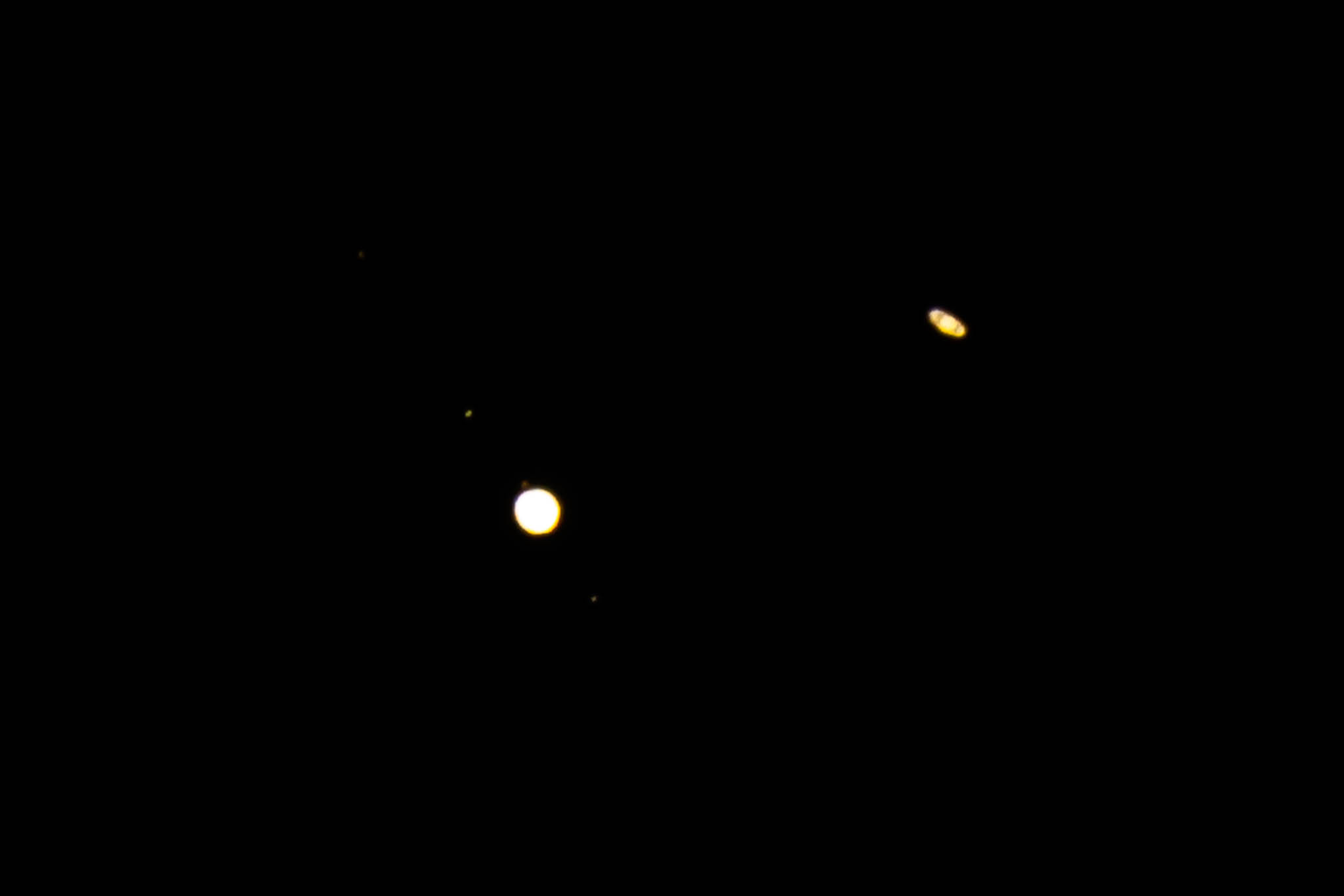Yesterday, we tried and failed to observe the Saturn and Jupiter planetary conjunction due to clouds moving in around sunset. Today, we drove to Kerr Dam and Reservoir in Virginia near the border with North Carolina to get clear and dark skies.

We clearly saw Jupiter appear not long after sunset. It was relatively low in the sky around where we were expecting it. Saturn was also just barely visible with the naked eye.
We are definitely not experienced at any sort of astrophotography. Certainly not photographing planets! But we did the best we could using the gear we had on hand.
What was most surprising was that our 800mm f/11 lens could actually resolve the rings of Saturn! When taking the photo, Saturn looked like just a big disk. But after lowering the brightness a bit while editing, I realized we could see the planet in the center and rings around it! Unfortunately, if we had known this at the time, we would have reduced the exposure. There is only so much one can do when the photo is simply overexposed.
It was also surprising that four of Jupiter’s moons are visible. They’re a bit faint but they’re there! I had read that they may be visible with a telescope but didn’t expect the 800mm lens to pick them up. It turns out that even our 400mm could see them! One of them appears very close to Jupiter and likely can’t be seen in the photo unless you’re using a huge monitor or zoom in.
We ended up spending about half an hour watching and photographing the conjunction. We were going to try and take some Milky Way photos afterwards as it was faintly visible even with a half moon high up in the sky. Unfortunately, a big cloud decided to show up and cover the sky! That ended our evening as it started blocking Jupiter and Saturn as well and we were already very happy with the photos that we got.
Driving down to the southern edge of Virginia was definitely worth it! We had a fantastic clear and dark sky to observe this once in a lifetime event. Tonight is the closest the planets will appear during this event and is only observable for about two hours or so after sunset before they fall under the horizon.



One Reply to “The Great Conjunction of 2020”